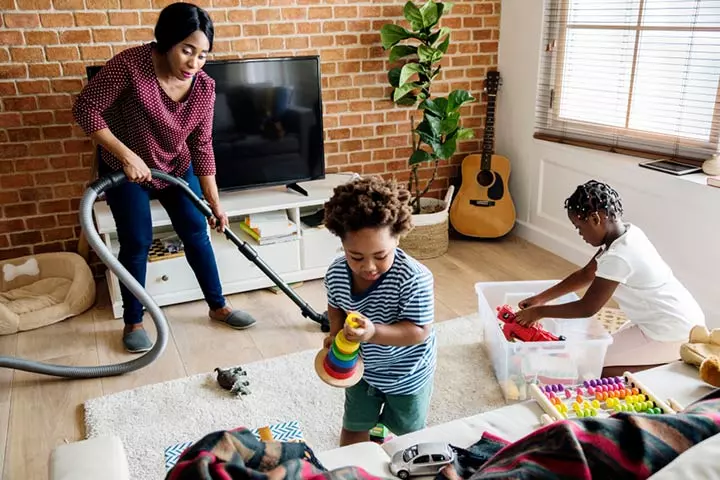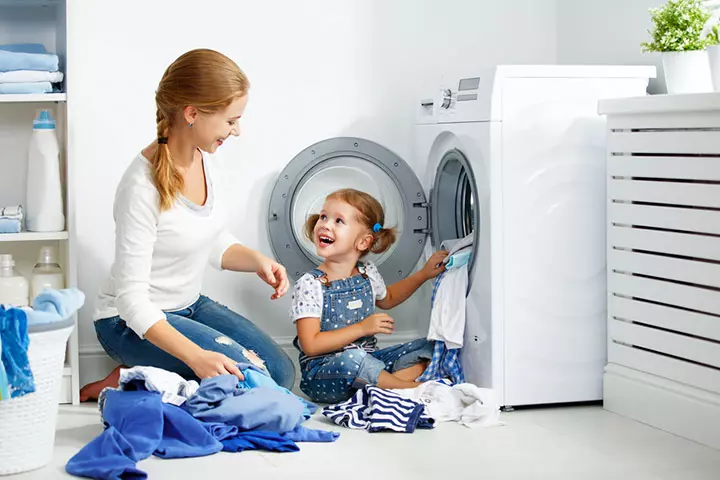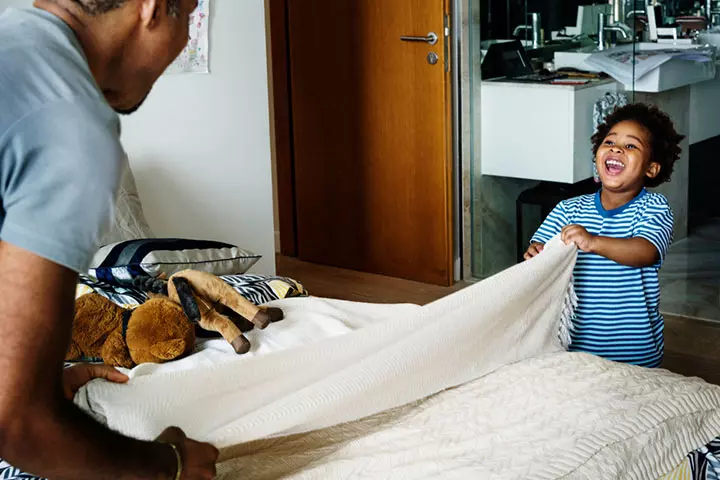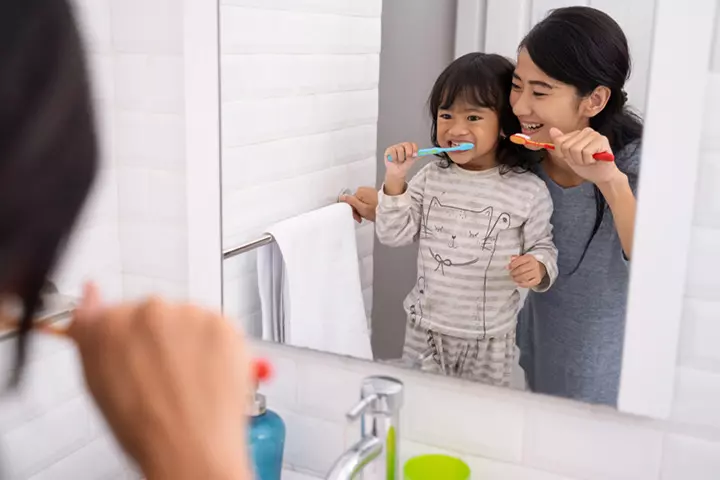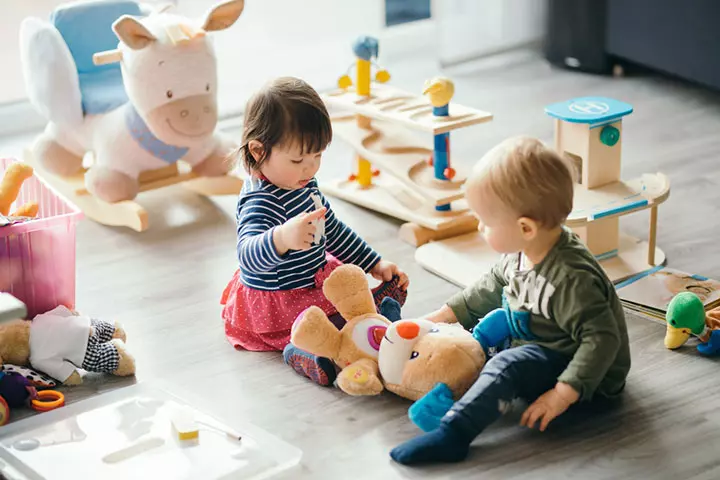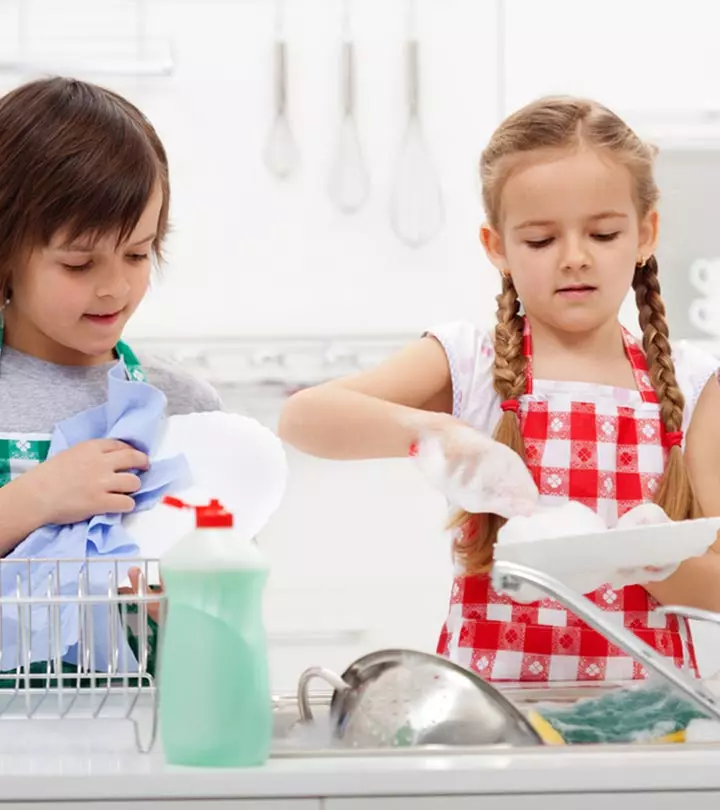

Image: Shutterstock
Your kids are a reflection of who you are, which can be a huge responsibility for a parent. The way you raise your kids will shape them into the adults they become. You have the responsibility of passing on the right values and morals to your kids so that they grow into responsible adults. Every parent wants their kids to grow up and be successful, and a big part of that is learning to take up responsibilities, first of yourself and then with things around you. If you want your kids to know how to be responsible, it will take dedication and hard work, but it is a rewarding task. Here are 9 tips and tricks to teach your kids responsibility:

1. Show Them The Way
Image: Shutterstock
Your kids learn from watching what you do rather than what you only teach them. So, if your toddler does not throw that chocolate wrapper in the bin after he’s done, chances are he has seen you do the same. So the first rule is to set a good example and show them the right way.
2. Start Young
Image: Shutterstock
It’s always a good idea to teach your kids the importance of being responsible at a young age. You cannot spring responsibility on a teenager and expect them to take it up. It’s unfair, and chances are they won’t learn. A good age to start handing out age-appropriate responsibilities is when they are toddlers.
3. Allow Them To Help You
Image: Shutterstock
When they see you doing chores around the house, politely ask them to join you. They can help you clear out clutter, put things back in their place, and put the waste in the trash can. When you involve your kids in everyday chores, they feel valued, and it teaches them responsibility.
4. Positive Reinforcement
Image: Shutterstock
Don’t hold back your appreciation for your kids when they complete a task or do it well. Positive reinforcement encourages kids to continue doing what they do. It teaches them to help, and chores won’t feel like work. Offer them praise and watch them take ownership of their actions.
5. Speak Out Loud
Image: Shutterstock
Try to speak out loud about what you do so your kid can learn. For example, while clearing out the table after a meal, you could say, “Now we clear out the waste in the bin and put the dishes in the sink.” Using “we” is a great way to teach your kids what to do. They don’t feel singled out and will be happy to do the task at hand.
6. Set Your Expectations Right
Image: Shutterstock
You are teaching your toddler how to do something, so be aware that it’s not going to be as perfect as you do it. They are still learning and might not get it right the first few times. Do not criticize them. Instead, appreciate their effort and teach them how to do it better the next time.
7. Follow A Routine
Image: Shutterstock
A routine is essential to establish a pattern. Kids love order, and they follow through when there is a system in place. Therefore, don’t break the routine, and with time, it will become second nature to follow it.
8. Say No To Rewards
Image: Shutterstock
Rewarding your kid too much can be detrimental to what you’re trying to accomplish. There’s a time and place for rewards, and it’s not when your kids do something that they are supposed to do. Avoid rewarding your kids simply because they put their dirty clothes in the laundry basket or put their dishes in the dishwasher.
9. Teach Them Consequences
Image: Shutterstock
Learning to take care of their things not only teaches your kids responsibility, but they also understand that their actions have consequences. If your kid refuses to put away his toys, make sure you tell them that they cannot play with them for the next few days. Most importantly, follow through on your actions if your kids shrink from their responsibilities.
Parenting might be a huge responsibility and involves dedication and commitment. Your kids learn from you and mirror what you do. Therefore, be aware of your actions, especially around your kids. Remember to go easy on yourself if you mess up and try again the next day. If you liked our article, share it with fellow parents.
Community Experiences
Join the conversation and become a part of our nurturing community! Share your stories, experiences, and insights to connect with fellow parents.



